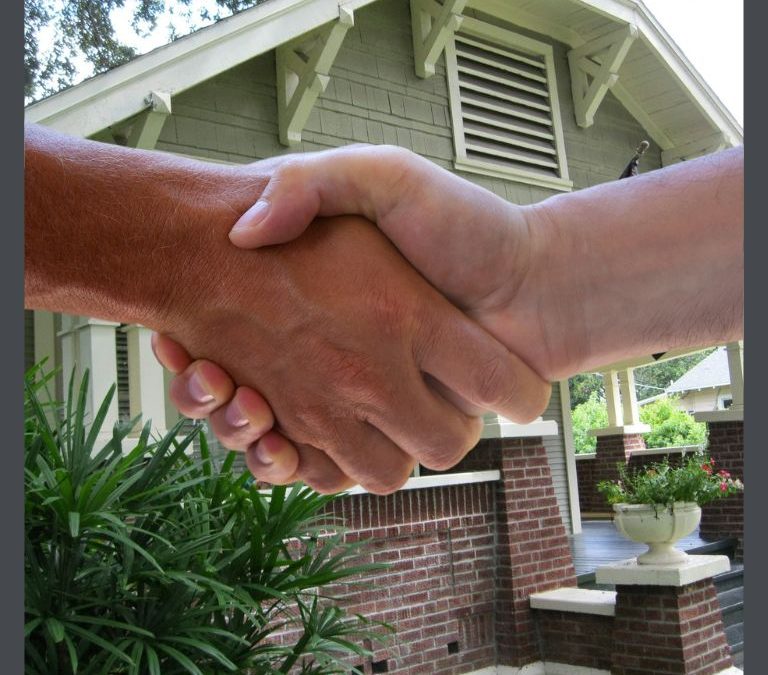
by bungalow101 | Jan 6, 2023 | Doing it the right way, Random Musings
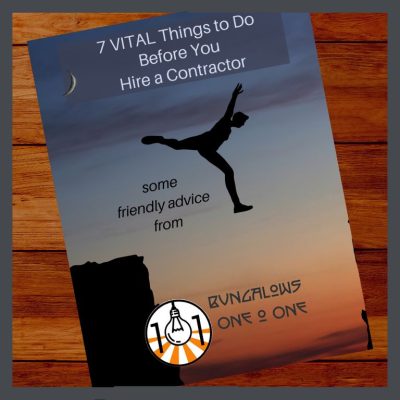 Once upon a time, I was standing in line at a Japanese take-out (great place!) & stepped back when I noticed the grungy guy in front of me. He was wearing a t-shirt that had seen 1,000 better days. It was a bit hiked up in the back, & I could almost see his heinie protruding from his well-worn, baggy jeans. His hair, was long & tied back in a raggedy ponytail.
Once upon a time, I was standing in line at a Japanese take-out (great place!) & stepped back when I noticed the grungy guy in front of me. He was wearing a t-shirt that had seen 1,000 better days. It was a bit hiked up in the back, & I could almost see his heinie protruding from his well-worn, baggy jeans. His hair, was long & tied back in a raggedy ponytail.
Imagine my surprise when, after ordering, he turned around to display the twinkliest blue eyes I have ever seen (Yes, that includes Santa.) & the biggest most beautiful smile. He grabbed my husband in a big hug & they both bounced up & down exclaiming their extreme joy at seeing one another.
Turns out that this raggedy guy, who upon further inspection was spotlessly clean & fresh, was an old house contractor for whom my husband often worked. Garrett enjoyed a stellar reputation in Los Angeles & with our company because he consistently delivered beautiful work, & ran his business- scheduling, communication, legal, etc. – meticulously & heartfully. After this fortuitous introduction, he performed a great deal of work for me at the Hare House & I was always happy to see him & glad to pay him. Upon further acquaintance, I learned that he conducted his entire life in this fashion, being an extraordinary husband & a loving, enthusiastic father. I only wish every contractor I met had been even similar to this wonderful man. He was just not a fashion plate!
HIRE THE OLD HOUSE CONTRACTOR WITH THE NICEST SHIRT
Maybe not. I wrote the E-book, 7 VITAL Things to Do Before You Hire a Contractor, after reading terrible & sad stories on the Facebook, old house, group blogs. In every single story I could see the exact moment at which the project fell apart, the money got ripped off, the house got ruined, the heart got broken. Looking at my own heartbreaks, I could see the same pesky factors at play.
After 45 years as a specialty contractor (wood floors) & old house restorer (5- here’s the most awful one!) I have seen my share of horrifying surprises, so I decided to write a little book in hopes of making someone else’s path a wee bit smoother.
I established my company based on the firm policy of always exceeding the customer’s wishes & any time I failed to do this, examined every step of the process to find out how I could make it better next time. It’s always easy to cast blame on the other guy, & with any failed job, there is always plenty of blame to go around. However, there was always some piece of it that I had to call my own whether or not it made me highly uncomfortable to do so. And it did.
So I took my experiences on both side of the contract to see if I could create some advice that would be useful to a homeowner when they leap off the cliff & hire an old house contractor. I’m a big believer in jumping off that cliff & building my wings on the way down, but it helps to at least have a bag of feathers & maybe some chicken wire before giving it all up to gravity.
This article is just to show you the myriad ways you can land in the abyss that it are important to know, especially if you are venturing into restoration for the first time. To get the whole book, I’d love for you to sign up for my mailing list, but mostly, I just want to make sure that you don’t get Bozo’d like I did! So, if you don’t to be on the mailing list, just let me know & I’ll send you the book & disengage you. (But just so’s you know, I send some fun stuff!)
HOW TO HIRE AN OLD HOUSE CONTRACTOR- STEP BY STEP
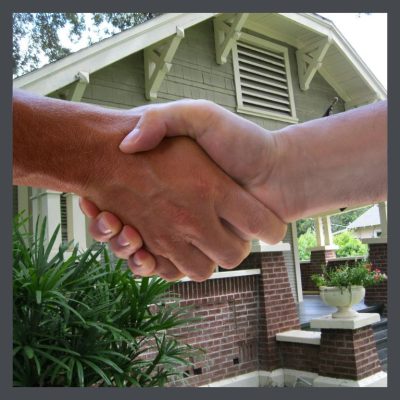 INTRODUCTION
INTRODUCTION
You have purchased a 100 year old (give or take) bungalow. You have your home inspection in your hand & you want to move forward on your restoration. You are not a DIY’er & do not plan to be one. You have a demanding job, perhaps a family & other responsibilities. You’ll need to hire an old house contractor or contractors, & you’ll be depending on the kindness of strangers to turn your house into a home. So, how do you find the best strangers?
I wrote training manuals for 40 years so I am big on proper sequencing & I loves me a checklist. So here are my suggested steps.
Find out:
- What is a bungalow? What are best restoration practices?
- What are your own needs?
- How do I find good tradespeople in my area?
- What else do I need to know about these folks?
A. Referrals
B. Reviews
C. Go legal.
It’s only at this point that you start talking to people.
- How do you conduct the first interview? What should you ask? What should you request?
- The Proposal- what should it include?
- How do I make sure that the restoration is satisfactory?
I go through each one of these steps in detail, in fact, each step is a section with sub-sections! I like to break it up to make it easy to understand & doable. I talk about your goals, your expectations, your money, & the joys of living life on a jobsite. I spend a great deal of time addressing the contract because that’s the basis of all that will transpire.
(That having been said, I am not a lawyer. Neither this article not my little booklet, should be construed as being legal advice. It is friendly direction- my tale of what has & what has not been effective for me. While I’m at it, I will mention that I have done all the steps I suggest & still gotten a crappy project. ‘Tis the human condition but, when I haven’t done it, I have gotten a crappy project 100% of the time!
I have no training beyond what I got in a ballet studio, no credentials, no licenses, no nothin’ in the construction trades nor in law. I have only my experience from which I draw & I can boast of having lost over $50,000 on a single project because the contractor I hired should have been in jail & ended up there soon after I fired him!)

STAY IN THE BUNGALOW KNOW!!!
Sign up for our newsletter & receive the complete FREE E-book, 7 VITAL Things to Do Before You Hire a Contractor.
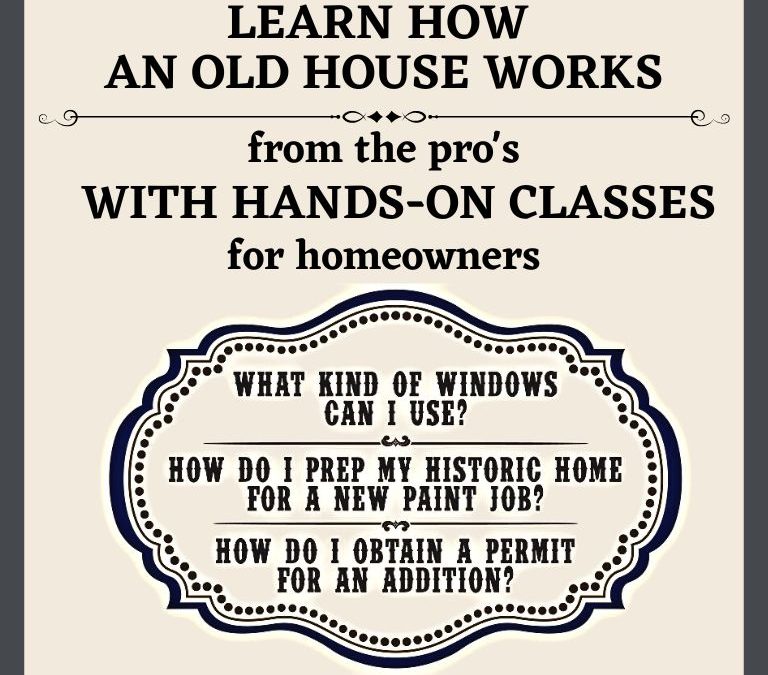
by bungalow101 | Dec 31, 2022 | Doing it the right way
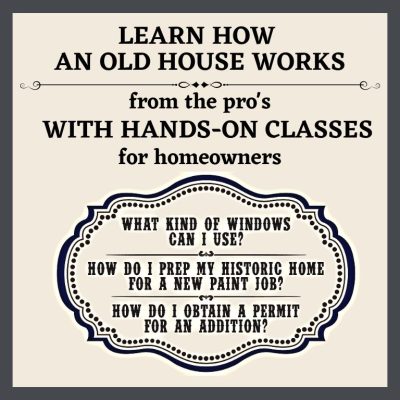 By attending old house classes, a conscientious steward can learn the basics of old house repair & maintenance. Owning an old house is not for sissies, nor for the uninformed. When I owned The Hare House, my 1910 Craftsman in Eagle Rock, I made some mistakes that I would have not made, & tossed away money that I would still have in my pocket, had I access to any of the education offered below.
By attending old house classes, a conscientious steward can learn the basics of old house repair & maintenance. Owning an old house is not for sissies, nor for the uninformed. When I owned The Hare House, my 1910 Craftsman in Eagle Rock, I made some mistakes that I would have not made, & tossed away money that I would still have in my pocket, had I access to any of the education offered below.
Even if you are not a hands-on restorer, by inclination, aptitude (or the lack of) or physical condition, you need to have some knowledge of these skills.You can also use them to educate any trusted tradesman that you have working at your home to expand their skills. This can save you money & provide you with services to which you might not have access in your area.
I suggest contacting the event producer about any classes that appeals to you that might require physicality beyond your own capabilities, to see if they can accommodate you. They want you to learn so they will make it as easy as they can for you.
The best thing about attending is that it gives you the opportunity to meet like-minded folks. I have met wonderful people in my preservation activities & formed many strong friendships. I urge you to participate. It will enrich your life!
I AM FULLY AWARE THAT MY LIST IS WOEFULLY INCOMPLETE! Please let me know what I have missed so that I can add them.
OLD HOUSE CLASSES IN THE NORTHEAST
 Craftwork Training Center
Craftwork Training Center
Telford, PA
Hands-on workshops are taught by professionals who are looking toward building the resources necessary preserving the future of the trades.
Participants learn a variety of crafts in order to pursue & succeed in vocations in the preservation trades. The Center’s goal is to build the next generation of highly trained artisans.
They offer classes in:
- Historic Preservation Boot Camp is a 3-day workshop covering repointing, plastering, & brick/stone repairs
- Repointing Brick & Stone Using Lime Mortar
- Repointing Special Joint Profiles Using Lime Mortar
- Basic Plaster Wall Repair
- Brick & Stone Surface Repair
- Sash Mechanics of Historic Windows
- Restoring Historic Wood Windows & Doors
- Basics of Building with Hempcrete
OLD HOUSE CLASSES IN THE MIDWEST
 Chicago Bungalow Association
Chicago Bungalow Association
“Now serving all old homes.”
The Association offers an extensive menu of seminars, webinars & hands-on workshops, designed to help you preserve & improve the appearance, usability & value of your home.
Though they focus on bungalow, they offer help to anyone who owns an old house of any style or age. They are some of the friendliest people in preservation that I have ever met. I have called them several times with questions regarding bungalow characteristics in the Midwest & they have always gone out of their way to obtain the information requested & relay it to me.
Take advantage of their many educational videos on many subjects, all beautifully & clearly presented.
Sign up for their email list so you can stay informed whether or not you live in Chicago! If you do live there, you’re welcome.
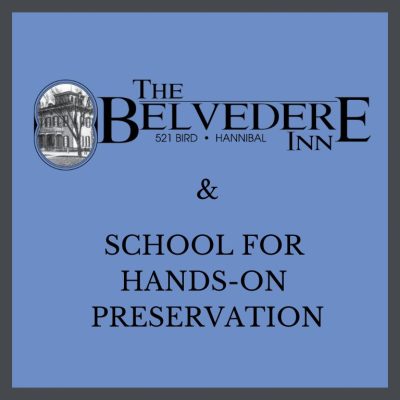 Belvedere School for Hands-On Preservation
Belvedere School for Hands-On Preservation
Hannibal, Missouri
Bob Yapp, after traveling the country, teaching preservation skills, had the dream of establishing a hands-on trade school, delivering workshops to students of all ages, lasting from 2 day to 8 days. His students come from all parts of the world to learn from this master.
The Beleveder School is lodged in the historic brick, antebellum, 1859 Italianate, Alfred Lamb Mansion which also holds his wife’s bed & breakfast. Known for its delicious breakfasts, the B&B provides a wonderful setting for making lifelong friends.
He also delivers seminars & workshops on many different topics to communities all over the U.S.
 Preservation Corps United
Preservation Corps United
Des Moines, Iowa
Founded in 2022, Preservation Corps United offers expert education in historic preservation & restoration to homeowners & construction professionals.
The founder, Tanya Keith, offers some impressive credential& & imparts this knowledge to those who attend her school.
Education:
2.5 years of Industrial Design program at Carnegie Mellon University, BFA Interior Design from Iowa State University with minors in Craft Design: Woodworking and Sociology
NCIDQ Certified Interior Designer since 2001
Belvedere School for Hands on Preservation Certificates:
Passive Wood Floor Restoration, Building Wooden Storm Windows, Restoration of Historic Stained Glass, Historic Plaster Repair, Historic Masonry Repair
Certified in Window Restoration by David Wadsworth.
Rethos
Saint Paul & Winona, Minnesota
“Whether you’re an individual or part of a group or business, if you believe in a future that honors our old buildings, beautiful towns, and our culture, you are a part of Rethos.”
Rethos is a non-profit organization offering hands-on & Zoom classes as well as informative videos to homeowners in all aspects of preservation. They are perfectly amenable to your attending a workshop without physically participating. You can learn a great deal by just watching! They offer classes such as:
Lead, Asbestos & Radon
Old Home Certified for Realtors®, a regional designation
Window Restoration
Drafting a Maintenance Plan
Wallpaper Installation
DIY Plumbing
PROFESSIONAL (OR WANNA-BE PRO) WOOD WINDOW RESTORATION EDUCATION
Wood Preservation Alliance
This group, composed of the most knowledgeable people in the field from all over the country, is a trade organization dedicated to saving old wood windows. In addition to connecting pro’s with homeowners, they assist everyone from those who want to have careers in wood window restoration, to established pro’s.
The WPA provide resources & information on products & materials as well as general information on running a successful business. They also “help preservationists find the tools they need to educate building owners, architects, and other decision makers about the value of original windows.”
If you wish to host a old house classes, contact them to see if they could provide you with a speaker/demonstrator. If you, or someone you know would like to spend your life returning old houses to their former glory, they are standing by to give you the education & assistance you need to be a successful professional.
PRODUCE OLD HOUSE CLASSES IN YOUR AREA
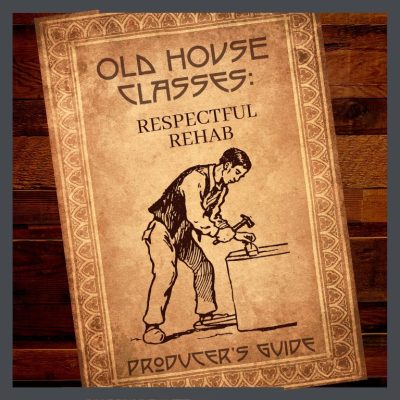 I am working on a manual (It’s pretty close to being done.) for hosting such an event, laying out step-by-step what to do to choose topics, attract craftsmen & volunteers, promote it & make some $$$ for your organization, & run a smooth-running day of hands-on, old house learning.
I am working on a manual (It’s pretty close to being done.) for hosting such an event, laying out step-by-step what to do to choose topics, attract craftsmen & volunteers, promote it & make some $$$ for your organization, & run a smooth-running day of hands-on, old house learning.
The manual is divided into sections, & I have included a timeline that cross references the sections so that you can go step-by-step through locating a venue, attracting speakers & demonstrators, recruiting enthusiastic volunteers & promoting the event to the public.
Let me know if you or your organization is interested in learning how to host classes & I’ll get working on this thing a bit faster! I’m going to sell it for a whole $25.00 because if you pay for it, you’re more likely to use it.
LOCAL HISTORIC PRESERVATION ADVOCACY GROUPS’ CLASSES
Many preservation groups host classes so if you are interested in attending, contact your local group. I am building lists of such groups, but it’s taking a ridiculously long time to create such a list for all 50 states so if you don’t see it here, Google “historic preservation your city.”
If you are involved in a preservation group, please encourage them to host old house classes. It’s a good P.R. activity, will encourage membership & it also can raise some serious funds.
THE BENEFITS OF OLD HOUSE CLASSES
Even if you have no plans to live the DIY life, it is important to understand how your house works. If any of these topics interest you, but you don’t have the physical capabilities perform the work, most of them will allow you to participate as an observer.
These are also great learning sources for the tradespeople who work for you. You need to have someone you can count on who has these skills & it may be up to you to ensure that they get them.
 There are young people all over the United States who would love to be trained in these trades & make this work their vocation. You can do your bit for preservation by letting them know about these opportunities. I have a book in my hip pocket that is about 50% complete, about how to run a successful specialty contracting business. My plan is to complete the dang thing & somehow raise the money needed to have it printed & then donate the books to high schools. So, someday I may be coming to you, asking for a hand-out & for your assistance in placing them!
There are young people all over the United States who would love to be trained in these trades & make this work their vocation. You can do your bit for preservation by letting them know about these opportunities. I have a book in my hip pocket that is about 50% complete, about how to run a successful specialty contracting business. My plan is to complete the dang thing & somehow raise the money needed to have it printed & then donate the books to high schools. So, someday I may be coming to you, asking for a hand-out & for your assistance in placing them!
 STAY IN THE BUNGALOW KNOW!!!
STAY IN THE BUNGALOW KNOW!!!
Sign up for our newsletter & receive our FREE E-book, 7 VITAL Things to Do Before You Hire a Contractor.

by bungalow101 | Dec 26, 2022 | Doing it the right way, Features
 The story begins with my love affair with the Alfred W. & Grace D. Hare House, a beautiful Craftsman, in Eagle Rock, a bungalow neighborhood in N.E. Los Angeles. Once an incorporated town in its own right, Eagle Rock is just west of Pasadena & was clearly influenced by the architecture being built there.
The story begins with my love affair with the Alfred W. & Grace D. Hare House, a beautiful Craftsman, in Eagle Rock, a bungalow neighborhood in N.E. Los Angeles. Once an incorporated town in its own right, Eagle Rock is just west of Pasadena & was clearly influenced by the architecture being built there.
The entrance to the property is through an arbor that I had built with saplings that were so green that leaves kept growing long after the fence was constructed. An arroyo rock border lined the sidewalk & roses grew intertwined through the sapling fence. There’s a great, full page image of the arbor in BUNGALOW DETAILS: Exterior, on page 190
The rocks came from the nearby Arroyo Seco (which in Spanish means “dry gulch”) a canyon between Eagle Rock & Pasadena. This rock is a common material seen in houses in this area & clearly shows their place in the world.
My next-door-neighbor retired & got herself a chainsaw, Every time I heard the buzzing start-up, I’d grab my keys & head for the nursery to buy another tree. I ended up with a small grove of birches in the front & a shaggy, grafted tree that looked like a parasol under which fairies could dance, when it was first installed but turned into Cousin Itt as it grew. The house is on 1 1/2 lots & is set well back from the street, so the Addams family representative, the huge, aged pine & the new birches made a nice little forest.
MY ARTS & CRAFTS GARDEN
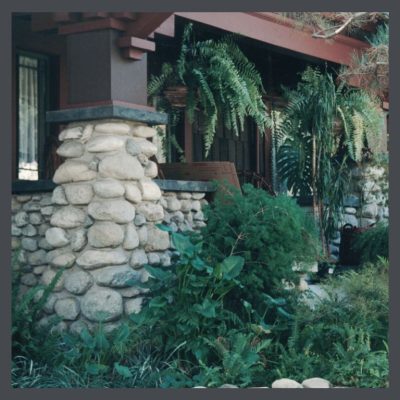 I also used the same rocks to form a path from the driveway to the front walk. I installed baby’s tears (Soleirolia soleirolii) a mossy appearing tropical perennial with tiny, tiny leaves between the path & the border. They were very soft & sweet & I coaxed them to grow so that they would provide a natural woodland look. A week before my mother was supposed to arrive to see the house for the first time, my gardener edged them so they were level on top & flat against the border. I am a plant whisperer but I admit that during that week I was more of a plant cheerleader & probably even a plant sergeant, alternating cheering & commanding them to grow back into gentle, fluffy mounds before my mom’s arrival.
I also used the same rocks to form a path from the driveway to the front walk. I installed baby’s tears (Soleirolia soleirolii) a mossy appearing tropical perennial with tiny, tiny leaves between the path & the border. They were very soft & sweet & I coaxed them to grow so that they would provide a natural woodland look. A week before my mother was supposed to arrive to see the house for the first time, my gardener edged them so they were level on top & flat against the border. I am a plant whisperer but I admit that during that week I was more of a plant cheerleader & probably even a plant sergeant, alternating cheering & commanding them to grow back into gentle, fluffy mounds before my mom’s arrival.
Inspired by the origins of the Arts & Crafts Movement, I planted an English garden. Arroyo rock bordered the garden beds which I enlarged & planted with shade loving plants on the shady side & plants that looked like shade loving plants on the other side. It was very difficult! Los Angeles is not England. Los Angeles is a desert & plants easily fry in the sun, so I had to stretch my wits to fill a bed that got nuked every day with plants that could have maybe been in an English cottage garden.
A great deal of my planning was centered on choosing what I would want to cut, to bring in the house. I love old flowers, so I chose calla lilies & several different types of ferns so that I would have greens. I grew roses in honor of my mother & my grandmother. My grandmother was an accomplished rosarian, & in 1930, was certified as a rose judge.
THE HOUSE
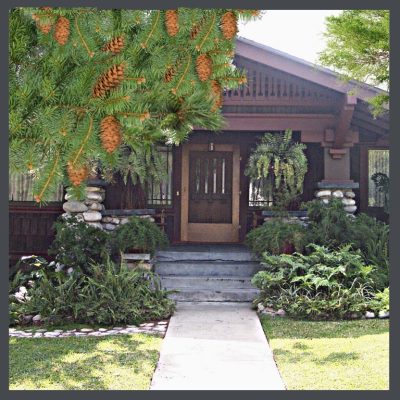 The centered, front-gabled porch is supported by massive timber framing & arroyo stone piers. A free-form arroyo stone chimney is on the east side. Sadly, I have no pictures of my chimney, but you can see it in Jane Powell’s book BUNGALOW DETAILS: Exterior, on page 57. It’s chunky!
The centered, front-gabled porch is supported by massive timber framing & arroyo stone piers. A free-form arroyo stone chimney is on the east side. Sadly, I have no pictures of my chimney, but you can see it in Jane Powell’s book BUNGALOW DETAILS: Exterior, on page 57. It’s chunky!
Typical of Southern California Craftsman style, as one of the earlier houses built, the Hare House helped set the style for later homes in Eagle Rock. Its solid massing & low horizontal profile, is boldly embellished with honest decorative elements, employing simple & natural building materials. As celebrated by the Arts & Crafts Movement, there are many connections from the outside to the inside, with the inviting porch & the sunroom & the many large windows, both casement & doublehung in every room of the house.
The entry features a centered Douglas fir door with 4 beveled lites. We added a screen door (not original) of quartersawn oak with brass screen. You can read about the door & the tiny faces who loved to look out of it here.
The shingle siding was stained when i purchased the house. I hire an inexperienced painter who had slapped a coat of paint on it by the time I arrived home from the office. We had chosen colors together & I thought that he noticed that I was showing him stain samples, but he did not. There is a good chance that he had never stained a house & didn’t know that you could. It broke my heart. I felt like I had betrayed the house.
THE BUILDER OF MY CRAFTSMAN IN EAGLE ROCK
The original owner (through 1923) Rev. Alfred W. Hare & his wife Grace D. Hare made significant contributions to the community of Eagle Rock & the City of Los Angeles.They were both active in the cultural, social & religious life of the town. Local papers of the time feature many stories of their travels, their house guests & their participation in events on behalf of the town’s various social organizations, such as the Women’s Club, the Elks, the Red Cross & the Near East Relief work after the war.
Ordained as a clergyman of the Congregational Church in 1896, Hare moved to Eagle Rock in 1909 as pastor of the shuttered Eagle Rock Congregational Church. Soon after, due to his inspired success of the church, Hare oversaw the construction of a new church building.
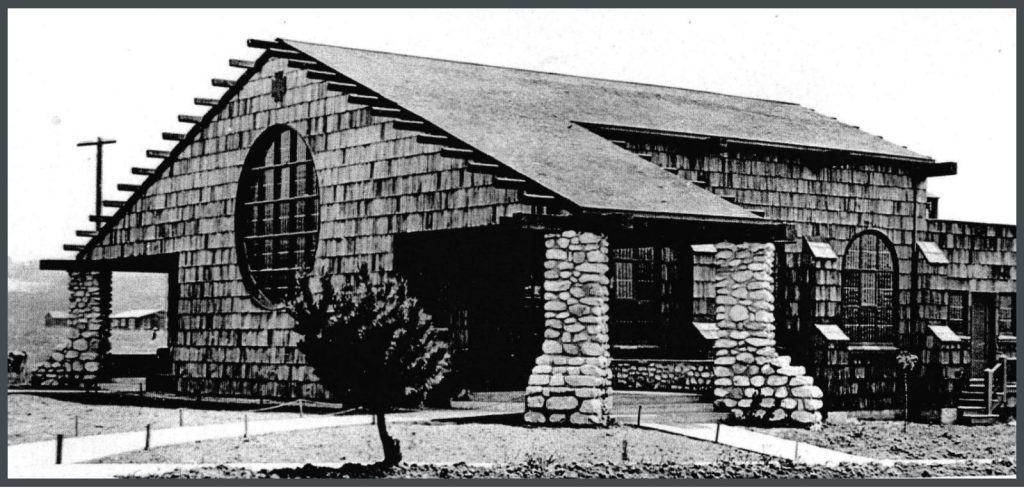
Sadly, this church, an extraordinary example of Arts & Crafts design, is no longer standing. I have been unable to track down both the architect of the house & of the church. To my eye, the house & the church were not drawn by the same hand. I would love to know your opinion of this.
After 1912, he was the pastor at other churches in Los Angeles, notably 27 total years at Park Congregational Church in Angeleno Heights.
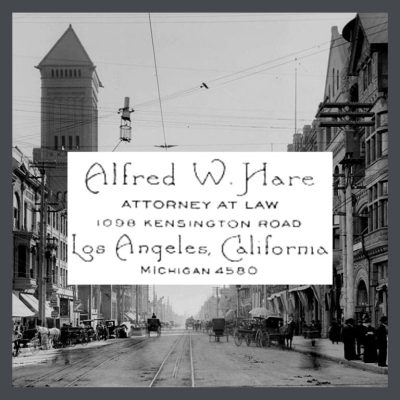 Admitted to the Los Angeles County Bar Association in 1912, Hare founded the large & successful law firm of Hare & Walden situated in downtown Los Angeles, which was connected by trolley to Eagle Rock. The little home office, with its built-in desk & fireplace was probably well-used by Hare, writing sermons, counseling parishioners & then, after he began practicing law, working on cases that he brought home from the office so that he could be with his wife, Grace.
Admitted to the Los Angeles County Bar Association in 1912, Hare founded the large & successful law firm of Hare & Walden situated in downtown Los Angeles, which was connected by trolley to Eagle Rock. The little home office, with its built-in desk & fireplace was probably well-used by Hare, writing sermons, counseling parishioners & then, after he began practicing law, working on cases that he brought home from the office so that he could be with his wife, Grace.
Mrs. Grace Dunsmoor Hare had been a “successful & popular” teacher & was the daughter of Charles Dunsmoor, who was County Clerk of Los Angeles County & California State Bank Commissioner. Both Mr. & Mrs. Hare were revered leaders in the realms of social activism & philanthropy in their community of Eagle Rock.
Learning these things about them helped to explain the house. Though one of the finest homes in the neighborhood, it was situated well away from the grah-ah-ahnd street of the town, Hill Drive. Learning of Reverend Hare’s astute ability to handle money -he helped several churches whose congregations he led to tear up their mortgages- my surmise is that he thriftily chose a less pricey, but large & beautiful lot on which to build.
The house, at 1950 square feet had only 2 bedrooms. In none of my research on him have I seen any evidence of children. In later years Grace was sickly & I wonder if her maladies could have affected her fertility. By the time the house was built, they had been married for 7 years & had probably stopped hoping to grow their family.
 The public areas were clearly designed for entertaining with a large living room & dining room, as well as a sunroom. I can easily imagine gay fundraisers for the Women’s Twentieth Century Club building fund to have taken place there, with Alfred playing the guitar & the 2 of them singing, perhaps accompanied by his sisters who wrote songs & skits to contribute to the effort.
The public areas were clearly designed for entertaining with a large living room & dining room, as well as a sunroom. I can easily imagine gay fundraisers for the Women’s Twentieth Century Club building fund to have taken place there, with Alfred playing the guitar & the 2 of them singing, perhaps accompanied by his sisters who wrote songs & skits to contribute to the effort.
Almost 100 years later, I was a member of Club & participated in fundraising events to restore & preserve the beautiful building. Again, I wonder at the architect because all the members of the Hare family, Alfred, Grace & his 3 sisters were instrumental in the fundraising that enabled it to be built & they possibly would have had some influence in its design.
It was an honor & a privilege to hold the stewardship of this beautiful home. When I restored it, I kept the Hares in mind & strove to create make choices that would please them & create a space in which they would feel comfortable. The woman to whom I sold the house held them in the same regard & the remaining restoration that she performed, was done with the same reverence, for the family, the neighborhood & the period.
TIP: TO READ MORE ABOUT MY LOVE AFFAIR WITH THE HARE HOUSE, CLICK HERE.
 STAY IN THE BUNGALOW KNOW!!!
STAY IN THE BUNGALOW KNOW!!!
Sign up for our newsletter & receive our FREE E-book, 7 VITAL Things to Do Before You Hire a Contractor.

by bungalow101 | Dec 20, 2022 | Doing it the right way
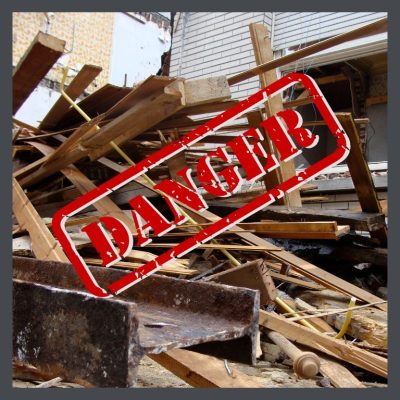 It’s not easy to stay healthy when restoring an old house. Increased demands on your time, your finances, the toxins in the materials you will demo & install, & the stress of making constant decisions, facing too many surprises mean that to stay strong, you need to maybe spruce up your lifestyle choices to compensate. And maybe you have to do this without no kitchen!
It’s not easy to stay healthy when restoring an old house. Increased demands on your time, your finances, the toxins in the materials you will demo & install, & the stress of making constant decisions, facing too many surprises mean that to stay strong, you need to maybe spruce up your lifestyle choices to compensate. And maybe you have to do this without no kitchen!
We already know that I think I’m everybody’s mother, but hear me out because I know some stuff. I learned it from my mother who learned it from her mother who, yep, learned it from her mother. I hail from a long line of totally badass women!
I also tend to be a bit of a natural health geek. As stated, I come by it honorably, but I also just tend to be a problem solver with a great deal of curiosity & a little help from my friend Dr. Google. In addition, I enjoy helping people so I have made it my business to learn things that I feel will benefit others. (Little boasting here- I got 35 lbs. off my formerly chubby hubby & got his 70 year old blood work looking like that of a 20 year old.)
PIGS & OLD HOUSES
 My grandmother, Sarah Emmeline Martz was a farmer’s wife who cooked for her family every day & tossed the slop to the pigs. During one season of household sniffles she noticed how healthy the oinksters were, compared to her own family, & considered what was in that slop. What she noticed was that she was giving the piggies the outsides of the food- the peels, the parts that grew in closest contact with the soil of her garden. Being a farmer’s wife, she knew where the nourishment for plants came from- the soil- & wondered if maybe she was throwing out the most nutritious part of her family’s food.
My grandmother, Sarah Emmeline Martz was a farmer’s wife who cooked for her family every day & tossed the slop to the pigs. During one season of household sniffles she noticed how healthy the oinksters were, compared to her own family, & considered what was in that slop. What she noticed was that she was giving the piggies the outsides of the food- the peels, the parts that grew in closest contact with the soil of her garden. Being a farmer’s wife, she knew where the nourishment for plants came from- the soil- & wondered if maybe she was throwing out the most nutritious part of her family’s food.
Decades later, my mother considered it a criminal act to use a peeling device. During my childhood I heard daily, “That’s where the nutrition is!” And tell us once again the story of Sarah Emmaline & the pigs.
Foods are the building blocks of our bodies whatever health problems we are experiencing or wanting to stave off are generally caused by inadequate nutrition & can be solved with making sure that we get sufficient nutrition. Recent scientific discoveries in labs all over the world as well as clinical trials have supported this belief and explained why it is true. It’s not just moms!
SO, HOW DOES FOOD SUPPORT LIFE?
 The answer is in the beneficial tiny living beings – microorganisms- that live in and on our bodies, especially our guts. Each one of us harbors a unique set, our own community of microorganisms- our microbiota- microscopic life. Our own, personal microbiota, our own group of microorganisms differs from that of any other person as much as our own fingerprints do. The effects of our microbiota on our bodies, are diverse & profound. I am going to concentrate on the microbiota living in our guts to address the subject of how to stay healthy when restoring an old house.
The answer is in the beneficial tiny living beings – microorganisms- that live in and on our bodies, especially our guts. Each one of us harbors a unique set, our own community of microorganisms- our microbiota- microscopic life. Our own, personal microbiota, our own group of microorganisms differs from that of any other person as much as our own fingerprints do. The effects of our microbiota on our bodies, are diverse & profound. I am going to concentrate on the microbiota living in our guts to address the subject of how to stay healthy when restoring an old house.
I have a YouTube playlist that has a great deal of information on this subject as well as many tips on how you can stay healthy when restoring your old house. I have attempted to include only videos that provide an introduction to the subject, but some of them may use medical term that yu have never encountered. If this is the case & you’d like to learn more about the subject, contact me & I will send you the glossary of terms that I created for myself when I was doing my own study on gut health. I am just a student myself, but I think that I have made it all the way to second grade!
HOW MICROBES HELP US STAY HEALTHY WHEN RESTORING AN OLD HOUSE
Here are some of the relationships that have been found between us & these microorganisms:
- Mental soundness- in addition to increasing of energy for working, taking care of our families & running a construction crew, microorganisms directly affect mood. The gut is described as being the “second brain” & the imbalance of microorganisms is directly correlated to such things as insomnia, anxiety, depression & our reaction to that $14,000 bid.
- Balancing hormones- These microbes control the endocrine system, and support or inhibit hormonal harmony, including estrogen, insulin & thyroid. This is especially important as we age, approaching menopause & beyond, when our endocrine system is especially taxed. The endocrine & the nervous systems work together to keep us sharp & jolly.
- Increase energy levels- By helping us absorb & utilize nutrients & to get rid of toxins, energy levels improve, allowing us successfully take on challenges such as getting that $14,000 bid to rebuild the chimney.
- Immune system- microorganisms help our bodies fight off disease by defending us from pathogenic (disease causing) organisms as well as allergens. They are the super women of the immune system.The demo process involves exposing & propelling allergens & pathogens into the air YOU BREATHE. Dust, mold, insect & animal droppings- it’s all there. (And don’t forget that PPE. You’re living on a jobsite.)
- Reduce yeast & urinary tract infections. The good bacteria once again save the day by preventing disease causing bacteria from adhering to the bladder wall. I hate to be indelicate, but for those times the only bathroom bathroom is being reno’d…And incidentally-
- Weight control- Scientists in labs have created obese mice from normal sized mice by giving them microorganisms (tiny living organisms) from obese humans, & have created lean mice by giving them microorganisms from skinny folks.
- Research has shown that a proper balance of microorganisms in the gut contributes to weight loss. What’s in your gut determines how you will process calories & how you will store them.
- The heart – Having a healthy gut allows cholesterol to be excreted by the bowel instead of accumulating at high levels in the bloodstream.You can see that these are some active critters, helping you to stay healthy when dealing with the rigors of renovation! I have a YouTube playlist that has a great deal of information on this subject as well as many tips on how you can stay healthy when restoring your old house.

STAY IN THE BUNGALOW KNOW!!!
Sign up for our newsletter & receive our FREE E-book, 7 VITAL Things to Do Before You Hire a Contractor.

by bungalow101 | Dec 9, 2022 | Doing it the right way
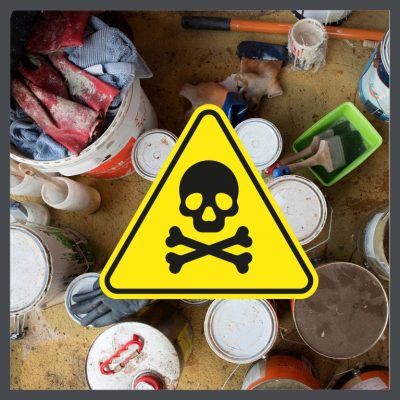 The dangers of restoring an old house can be considerable, but with proper planning can be minimized. Let’s take a look at the actions required.
The dangers of restoring an old house can be considerable, but with proper planning can be minimized. Let’s take a look at the actions required.
A contractor has been hired to begin the restoration of your home. You have discussed your staying in the house while the work is being performed & you have figured out how to do it despite the inconveniences. But what about the dangers to which you might be exposed?
The fact of it is that you will be living in a jobsite, in the middle of sawdust, paint, solvents & other fumes. Some of these materials may not give you any warning signs of their danger- such as a bad odor or immediate irritation, so it’s a vital to understand the hazards to yourself, your family & to your pets (whom we know are family but I just want to mention them because they live close to the floor & they lick themselves.)
Fortunately, by law, all the dangerous materials that will be used in the restoration of your old house, have detailed, written safety information about them. These materials should be named in the bids you receive from contractors, & your contractor should be happy to provide you with copies of the safety information, but if he balks, (uh, not a good sign) you can get them directly from the manufacturer online.
SAFETY DATA SHEETS & THE DANGERS OF RESTORING AN OLD HOUSE
 OSHA (Occupational Safety & Health Administration) is a U.S. federal body whose mission is to “assure safe & healthy working conditions for working men & women by setting & enforcing standards & by providing training, outreach, education, & assistance.”
OSHA (Occupational Safety & Health Administration) is a U.S. federal body whose mission is to “assure safe & healthy working conditions for working men & women by setting & enforcing standards & by providing training, outreach, education, & assistance.”
Their Hazard Communication Standard requires that each manufacturer, distributor, or importer provide Safety Data Sheets (SDS’s) for each hazardous material to users & workers to explain information on these hazards, clearly & thoroughly. The Standard requires that the information be presented in a consistent, user-friendly format.
Previous regulations did not mandate this standard & manufacturers did not use safety materials that were consistent one to the next. For example, some manufacturers labeled the most dangerous materials as a 1, others did the complete opposite, labeling the most dangerous as a 5. And, the data was not organized in a consistent fashion so you had to search the contents for the information that you needed each time. Some of these sheets contain multiple pages so you can see that these inconsistencies would not be helpful in an emergency situation!
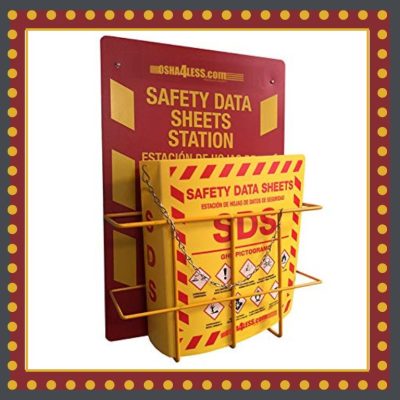 SDS’s tell users, both workers & homeowners, the properties of each chemical, what the hazards of the product are to the individual & to the environment. They let you know how to use the product safely, what will happen if the recommendations are not followed, & how to recognize symptoms of exposure. Very importantly, they lay out the steps of what to do if emergencies should occur.
SDS’s tell users, both workers & homeowners, the properties of each chemical, what the hazards of the product are to the individual & to the environment. They let you know how to use the product safely, what will happen if the recommendations are not followed, & how to recognize symptoms of exposure. Very importantly, they lay out the steps of what to do if emergencies should occur.
Your contractor is required by law to keep these in the workplace & to train his workers on them so that they will know how to handle these hazardous materials to keep themselves & others safe. Fortunately, there are safety companies that create safety meetings that can be done in the field every week. Each one is a sheet of paper with the information on it that each person reads & signs off. Easy peasy.
This is the minimum safety training that a professional company performs in order to reduce the amount of dangers inherent in restoring old houses, for their employees & for you.
I do not recommend the hiring of any contractor or tradesperson who has a casual attitude, or who is ignorant of the importance of Safety Data Sheets.
THE SDS SECTIONS- FROM THE TOP
Lists the specific materials & names its intended use. It also provides you with the contact information for the supplier.
- Provides warning of the hazards of the material.
- Lists the all ingredients of the product.
- Describes the first aid treatment that would be given by an untrained person in case of exposure.
- Provides instructions for fighting a fire caused by the chemical.
- Gives instructions on dealing with accidental spills, leaks or releases in order to minimize harm to persons or property.
- All data about safe handling & storage.
- Lays out exposure limits with solutions for minimizing such exposure.
- Identifies physical & chemical properties associated with the product.
- Describes the various actions of the chemical constituents under various conditions.
- Explains the toxic & health damaging properties of the material.
- Describes the product’s environmental impact.
- Proper disposal & safe handling of materials & containers.
- Proper shipping.
- States the safety, health & environmental regulations that apply to the products.
- Dates of when the sheet was created or edited.
These sheets may be short & sweet but they also may be many pages long. Studying them is not an entertaining or amusing task, but it’s one to not overlook when you wish to mitigate or avoid the dangers in restoring your old house.
GLOBALLY HARMONIZED SYSTEM
The Globally Harmonized System (GHS) is an international system of hazard communication which provides a standard system to format safety data sheets & to label hazardous elements in pictograms.
PICTOGRAMS: a pictorial symbol for a word or phrase.
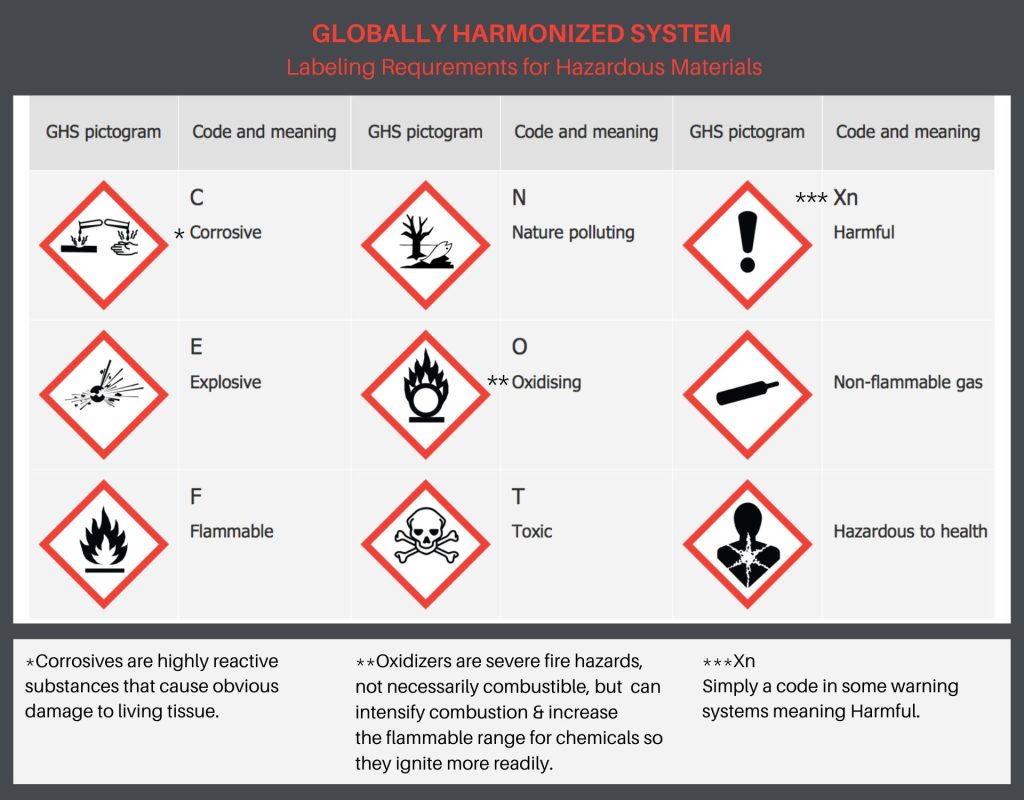
Hazard pictograms are used to warn us about the presence of a hazardous (to people &/or the environment) chemical. These pictograms appear in the shape of a diamond with a bright red border & a white background. Any single chemical could have one or more than one of these warning images.
If you should like to read more about SDS’s, OSHA has a document that provides more information. In reading the sheets you are going to run into many words you do not understand. OSHA provides a glossary of terms that you might find helpful.
SORRY, THERE’S MORE
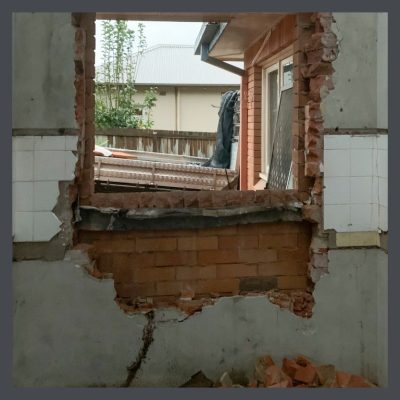 The SDS’s are about only the new materials that are being used. There’s also the issue of the old materials coming out. Amongst these is our old buddy, lead. I’m not a fan as I have expressed loudly in this article.
The SDS’s are about only the new materials that are being used. There’s also the issue of the old materials coming out. Amongst these is our old buddy, lead. I’m not a fan as I have expressed loudly in this article.
There’s an abundance of other materials & pathogens to pay attention to during demo. This is a good article to prepare you for what you are very likely to encounter. I’d also like to send you to my YouTube playlist, SAFETY FIRST, which is an introduction to personal protective equipment.
The first one by the little animated woman with the cute English accent makes a good point. The equipment that is need is not task oriented. It must keep you safe in the environment.
Disclaimer: There is a great deal more information on construction safety than what you see in this article & in these videos. This is merely an introduction to the topic. I am not a safety professional. I’m just a woman who has suffered the ill effects of being around toxic materials & I don’t want you to experience the same.
THE REWARDS OF RESTORING AN OLD HOUSE (DESPITE THE DANGERS!)
The rewards are huge. You will be saving a piece of history that is beautiful & tells a story & you will contribute to that story. You will learn & teach your children problem solving skills, design skills, communication & cooperation skills, prevailing over horrible surprises skills, budgeting skills & give them the opportunity to apply the things that they are learning in school. Studying the SDS’s (using the OSHA glossary!) & watching the videos is a great way to orient them to their physical environment & stretch those science chops. It’s also a good opportunity to teach them that there are dangers in the environment that can be overcome with knowledge & planning. A great lesson to learn early!

STAY IN THE BUNGALOW KNOW!!!
Sign up for our newsletter & receive our FREE E-book, 7 VITAL Things to Do Before You Hire a Contractor.
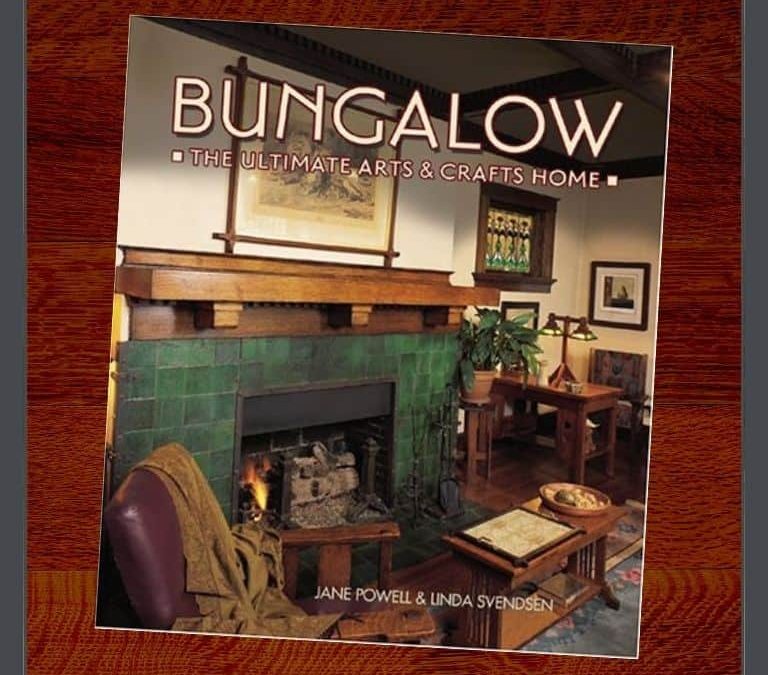
by bungalow101 | Jun 16, 2022 | Doing it the right way, The History
by Jane Powell, author & Linda Svendsen, photographer
 This book, BUNGALOW: THE ULTIMATE ARTS & CRAFTS HOME, was Jane’s most impressive work & it is majestic, with 285 large, glossy pages. She referred to it as “The Big Book of Bungalows” & I’m not certain that she was enthralled with the publisher’s final choice of title.
This book, BUNGALOW: THE ULTIMATE ARTS & CRAFTS HOME, was Jane’s most impressive work & it is majestic, with 285 large, glossy pages. She referred to it as “The Big Book of Bungalows” & I’m not certain that she was enthralled with the publisher’s final choice of title.
Hewn & Hammered’s review of the book opined, “The book is written with humor and warmth, never taking its subject matter too seriously, which is a welcome alternative to many other books in the genre that treat these buildings as museum exhibits before their original purpose (and, in most cases, only purpose) as homes.”
A quote from an Amazon reader: “This is my first contact with Powell/Svendsen’s books, and while it is indeed coffee table size (it needs to be large to accommodate the beautiful photography) it is so charming and readable that, without so intending, I READ it (in one sitting, yet). We have several other books of gorgeous bungalows, many with the same houses as subjects, with accompanying commentary equivalent to dry stale cornflakes; this one is crumpets and cream. Like others documenting bungalow style architecture, this book is not intended as a construction or instruction manual, but as inspiration. For admirers of bungalow style and for those seeking a picture to replace the thousand words BUNGALOW: THE ULTIMATE ARTS & CRAFTS HOME is an easy choice.”
While her other books are much more instructional, there is much factual information to be gained from reading this book. Jane is an amusing teacher so you don’t notice at all that you are sitting in class.
FOREWORD TO BUNGALOW: THE ULTIMATE ARTS & CRAFTS HOME
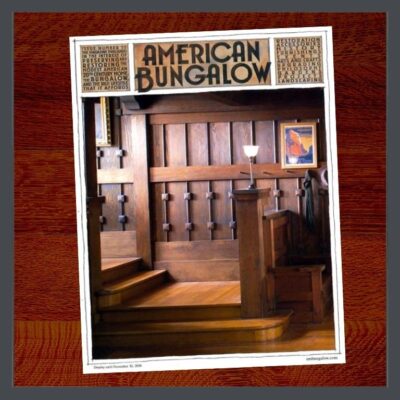 Jane introduces the book with some beautiful shots of bungalows by Linda Svendsen, including the impressive staircase of Jane’s bungamansion, the Sunset House in Oakland. Walking up these stairs, so sexy that they made the cover of American Bungalow, photographed by Alex Vertikoff, is an awesome experience. I wish this word had not been appropriated to mean, “like, totally cool” because the huge Doug Fir staircase is truly, “extremely impressive or daunting; inspiring great admiration, apprehension, or fear.” The workmanship is masterful, the dark wood lovely, & when you walk up these stairs, you are cocooned in the world of the wealthy 100 years ago. (Jane mentions, the builder was the owner of a lumber company so he got the wood wholesale, but still.)
Jane introduces the book with some beautiful shots of bungalows by Linda Svendsen, including the impressive staircase of Jane’s bungamansion, the Sunset House in Oakland. Walking up these stairs, so sexy that they made the cover of American Bungalow, photographed by Alex Vertikoff, is an awesome experience. I wish this word had not been appropriated to mean, “like, totally cool” because the huge Doug Fir staircase is truly, “extremely impressive or daunting; inspiring great admiration, apprehension, or fear.” The workmanship is masterful, the dark wood lovely, & when you walk up these stairs, you are cocooned in the world of the wealthy 100 years ago. (Jane mentions, the builder was the owner of a lumber company so he got the wood wholesale, but still.)
As Jane says about it, “… this book deals with the philosophy, history, & influences that led to the bungalow as we know it in North America. Don’t worry, it’s not very scholarly. Most it’s a celebration of bungalows & everything on them & in them, & the Arts & Crafts movement they represent. I think that you will enjoy the ride.”
And by “ride” she meant a purple PT Cruiser. Mine was red.
CHAPTER ONE: THE COLOR OF WIND
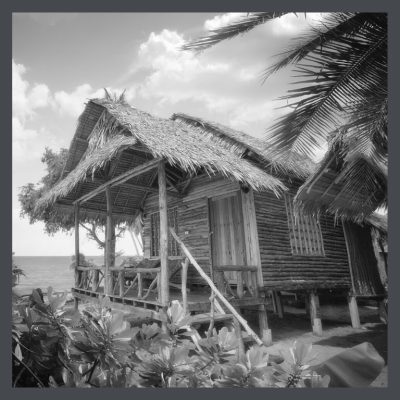 This chapter addresses, what is a bungalow? Well, it originated in India, & ended up in California inspired by a socialist design movement in Britain in the late 1800’s. Explaining that architecture isn’t simple, she answers this question by encouraging us to “Think outside the chicken” -by reading her book & viewing the images, we will just come to KNOW. It worked for me & whenever I feel wobbly, I come back to this book to get straightened out.
This chapter addresses, what is a bungalow? Well, it originated in India, & ended up in California inspired by a socialist design movement in Britain in the late 1800’s. Explaining that architecture isn’t simple, she answers this question by encouraging us to “Think outside the chicken” -by reading her book & viewing the images, we will just come to KNOW. It worked for me & whenever I feel wobbly, I come back to this book to get straightened out.
Going Native
A full description of the original bangala & the modifications made by the Europeans.
Getting Away From It All
The Industrial Revolution in Britain brought nostalgia for an idealized agrarian past.
The Seeds of Change
The Arts & Crafts Movement sprouts from the reverence for nature & ideas about design, & social & political reform.
CHAPTER TWO: IN FULL FLOWER
We learn about William Morris, the father of the Arts & Crafts Movement. There is a lovely quote about Morris which describes his many artistic passions & ends with, ..”& then he’ll do I don’t know what, but every minute will be alive.”
In my world, there is no greater compliment.
Pages of beautiful photos bring the copy to life as you learn to “Think outside the chicken” & begin to understand the soul of the bungalow.
Art for Art’s Sake
In this section Jane describes the Aesthetic Movement, which paralleled the A & C Movement, had the same roots & the same folks involved, but lacked the political & social philosophies of the latter.
I must admit to a great attraction to this design style. I see so much of the Arts & Crafts philosophy in the Aesthetic Movement & I really like their take on it. I especially like how its contrast of intricate small patterns inspired by nature complements the chunkier, more simple design of Arts & Crafts sharing the same inspiration.
In the Hare House, my Aesthetic collection adorned the dining room plate rails. In Tampa, I re-created the original divider shelves to display them.
The Bohemian Life
Jane is still in England, writing about the bungalows at the seaside that have acquired a bohemian reputation, representing a more simple life.
She stresses the fact that most of the Arts & Crafts houses were not bungalows, but looked to medieval designs for inspiration. It took Stickley to bring Arts& Crafts to America for it to assume it’s, uh, American form.
CHAPTER THREE: SMILING LAWNS & TASTEFUL COTTAGES
The Centennial Exhibition, held in 1876 spurred motivation for developing art & architecture that display American pride, though many bungalows clearly show European & Asian influence & you will see many images of this.
Global Inspiration, Indigenous Style
With the log cabin as inspiration, the bungalow was often more rustic. Jane continues on to describe the American flavor &unique local features found in bungalows across the country- with more of Linda’s lush photos.
CHAPTER FOUR: POPCORN & CAPITALISM
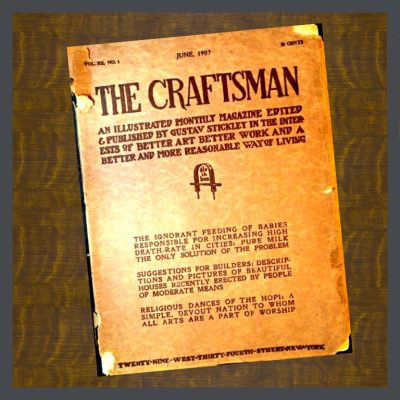 Ah! California, where the bungalow reached its full potential. She visits Northern & Southern California & it is here where we see my house in Eagle Rock.
Ah! California, where the bungalow reached its full potential. She visits Northern & Southern California & it is here where we see my house in Eagle Rock.
The Ideal Home
In this section she writes more about plan books & other publications as well as kit houses. The building boom of the 20’s was spurred by the street car, then the automobile.
Freedom of Assembly
More pre-cut buildings from a greater number of companies continued the bungalow boom. I must stress again that the images tell much of the story! You are seriously missing out by not having this book! Clinker bricks, limestone columns green-stained shingles & granite piers, Oh my!!!!!!!
Icon & Irony
More amazing photos & a look at how the A & C Revival has outlasted the original Movement. Hey, I’m glad that Stickley is getting the admiration & recognition that he did not receive in his later years. And while it’s on my mind, let me suggest that you watch this incredible documentary Gustav Stickley: American Craftsman.
CHAPTER FIVE: ON THE STREET
 This is the longest chapter of BUNGALOW: THE ULTIMATE ARTS & CRAFTS HOME & I don’t want to wear you out, so I’ll cover it in one section.
This is the longest chapter of BUNGALOW: THE ULTIMATE ARTS & CRAFTS HOME & I don’t want to wear you out, so I’ll cover it in one section.
The porch, part of the Arts & Crafts ideal of the melding of nature with the indoors. The entry welcomes guests to enter & sit before the hearth. We see some beautiful fireplaces here of tile & of brick in various patterns. She goes to on talk about dining rooms showing an abundance of beautiful built-ins & rich wainscoting, including mine, the Hare House, on page 202. I had received the Roseville candleholders as a gift from the president of my neighborhood association who had fought valiantly with me against Walgreens. Being a bunny maniac, I paired it with the faux Roseville bunny vase which contains the most beautiful flower arrangement that I had ever done. In the heat of getting ready for the shoot, I had neglected to put water in the vase & the flowers barely made it through the day!
She has a couple chunky sections on kitchens & baths, though her Kitchens & Bathrooms book cover the subject more fully. The section on bedrooms has a full-page spread of my bedroom on page 238, despite Jane’s grousing about the room’s Victorianess. The man who built my house, the Reverend Alfred Hare was known as a church leader who would leave each congregation with a fully paid mortgage for their building, so I couldn’t really see him as a man who would fork out good money to replace a perfectly good brass bed. (And Jane herself was a great fan of the backstory.)
In the photo you can see my collection of embroidered cat pillows, (with my little Bukhai whose sweet story you can read here, snoozing on the soft comfie bed) my grandmother’s picture on the wall, my mother & uncle’s pictures on the dresser & my grandmother’s confection tin in which she kept her clean hankies. And the hankies were in there too!
After I moved to Florida, a new friend, whom I had met at an event I had produced for Jane, was getting the tour of my Tampa bungalow. When we entered my bedroom she became very confused saying, “It’s déjà vu. I have been in this room before. It’s déjà vu!” I feared that we were going to need to bring out the smelling salts! It took me a moment to realize that she had seen the original room in the book which she had purchased at the event. Being a kitty fan, she had loved & remembered the cat pillows.
CHAPTER SIX: STEWARDSHIP
Here’s where Jane & I shared a soul. And, I guess it’s why I want you to read her books. So, read ‘em, & also head on over to the section on my blog, PRESERVATION GROUPS. It is a work in progress & you are so-o-o welcome to let me know about others to add.
Jane’s rallying cry was, “DO SOMETHING ABOUT IT!” & as a staunch preservationist, I stand with her on this.
CHAPTER SEVEN: THE IMPORTANCE OF BEAUTY
This chapter is Jane’s Random Musings.
Q. What did the Buddhist say to the hot dog vendor?
A. “Make me one with everything.”
BUNGALOW: THE ULTIMATE ARTS & CRAFTS HOME-IT’S ALL ABOUT MOI
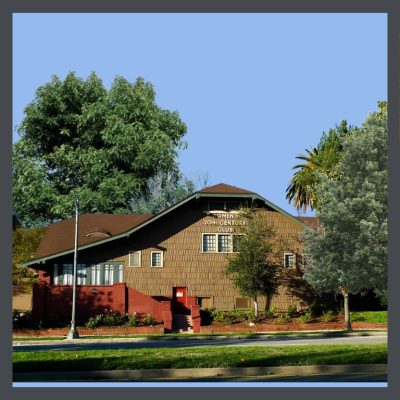 The Big Book, (Jane’s name for it) AKA, BUNGALOW: THE ULTIMATE ARTS & CRAFTS HOME, is my favorite because it contains so many images of the house I lovingly restored & left behind in California after my crushing defeat in my fight to save a neighborhood building. Jane & Linda & I spent the day shooting which was fun & exhausting. I waited with great anticipation for the book to be published so I could see my house as well as the other houses in the neighborhood which Jane & Linda had shot several months earlier- dodging the Halloween decorations that had adorned many facades. I was pleased to see my house so well represented & amused by some of the accompanying copy.
The Big Book, (Jane’s name for it) AKA, BUNGALOW: THE ULTIMATE ARTS & CRAFTS HOME, is my favorite because it contains so many images of the house I lovingly restored & left behind in California after my crushing defeat in my fight to save a neighborhood building. Jane & Linda & I spent the day shooting which was fun & exhausting. I waited with great anticipation for the book to be published so I could see my house as well as the other houses in the neighborhood which Jane & Linda had shot several months earlier- dodging the Halloween decorations that had adorned many facades. I was pleased to see my house so well represented & amused by some of the accompanying copy.
The exterior of my house is pictured on page 107, with another from my neighborhood. The Arts & Crafts clubhouse of the Woman’s Club to which I belonged is on page 100. The sisters of the man who built my house raised the money to erect the clubhouse by performing the skits & songs that they wrote. 100 years later I had the privilege of walking in a fashion show to raise money to restore & preserve that same building.
My sunroom is pictured on page 161 with a Moroccan table which was recently pitched after out attempt to rid it of termites. (I live in Florida now! If you have any clue as to how I might be able to get another one of these, Please let me know.) My living room is on page 181. I sold the couch & matching chair when we left Eagle Rock because it was painfully uncomfortable. We had to take it apart to get it out the door & there was a dead, fossilized rat in it. That wasn’t in any of the books!
To buy this book, you’re going to have to search for it in the various on-line booksellers. KITCHENS is available in Kindle but the rest can require some sleuthing. My fingers are crossed that the rest will be Kindled soon.
READ ALL JANE’S BOOKS ABOUT BUNGALOWS!
 BUNGALOW KITCHENS
BUNGALOW KITCHENS
Restoring the heart of the home.
 BUNGALOW BATHROOMS
BUNGALOW BATHROOMS
Everything you need to know to restore or create a beautiful & functional bungalow bathroom.
 BUNGALOW DETAILS: EXTERIOR
BUNGALOW DETAILS: EXTERIOR
What makes a bungalow.
 BUNGALOW DETAILS: INTERIOR
BUNGALOW DETAILS: INTERIOR
Your inspiration for a beautiful home.
& last but not least
 LINOLEUM
LINOLEUM
It’s not vinyl!

STAY IN THE BUNGALOW KNOW!!!
Sign up for our newsletter & receive our FREE E-book, 7 VITAL Things to Do Before You Hire a Contractor.

 Once upon a time, I was standing in line at a Japanese take-out (great place!) & stepped back when I noticed the grungy guy in front of me. He was wearing a t-shirt that had seen 1,000 better days. It was a bit hiked up in the back, & I could almost see his heinie protruding from his well-worn, baggy jeans. His hair, was long & tied back in a raggedy ponytail.
Once upon a time, I was standing in line at a Japanese take-out (great place!) & stepped back when I noticed the grungy guy in front of me. He was wearing a t-shirt that had seen 1,000 better days. It was a bit hiked up in the back, & I could almost see his heinie protruding from his well-worn, baggy jeans. His hair, was long & tied back in a raggedy ponytail. INTRODUCTION
INTRODUCTION



 By attending old house classes, a conscientious steward can learn the basics of old house repair & maintenance. Owning an old house is not for sissies, nor for the uninformed. When I owned
By attending old house classes, a conscientious steward can learn the basics of old house repair & maintenance. Owning an old house is not for sissies, nor for the uninformed. When I owned 
 Chicago Bungalow Association
Chicago Bungalow Association Belvedere School for Hands-On Preservation
Belvedere School for Hands-On Preservation


 I am working on a manual (It’s pretty close to being done.) for hosting such an event, laying out step-by-step what to do to choose topics, attract craftsmen & volunteers, promote it & make some $$$ for your organization, & run a smooth-running day of hands-on, old house learning.
I am working on a manual (It’s pretty close to being done.) for hosting such an event, laying out step-by-step what to do to choose topics, attract craftsmen & volunteers, promote it & make some $$$ for your organization, & run a smooth-running day of hands-on, old house learning. There are young people all over the United States who would love to be trained in these trades & make this work their vocation. You can do your bit for preservation by letting them know about these opportunities. I have a book in my hip pocket that is about 50% complete, about how to run a successful specialty contracting business. My plan is to complete the dang thing & somehow raise the money needed to have it printed & then donate the books to high schools. So, someday I may be coming to you, asking for a hand-out & for your assistance in placing them!
There are young people all over the United States who would love to be trained in these trades & make this work their vocation. You can do your bit for preservation by letting them know about these opportunities. I have a book in my hip pocket that is about 50% complete, about how to run a successful specialty contracting business. My plan is to complete the dang thing & somehow raise the money needed to have it printed & then donate the books to high schools. So, someday I may be coming to you, asking for a hand-out & for your assistance in placing them!
 The
The  I also used the same rocks to form a path from the driveway to the front walk. I installed baby’s tears (Soleirolia soleirolii) a mossy appearing tropical perennial with tiny, tiny leaves between the path & the border. They were very soft & sweet & I coaxed them to grow so that they would provide a natural woodland look. A week before my mother was supposed to arrive to see the house for the first time, my gardener edged them so they were level on top & flat against the border. I am a plant whisperer but I admit that during that week I was more of a plant cheerleader & probably even a plant sergeant, alternating cheering & commanding them to grow back into gentle, fluffy mounds before my mom’s arrival.
I also used the same rocks to form a path from the driveway to the front walk. I installed baby’s tears (Soleirolia soleirolii) a mossy appearing tropical perennial with tiny, tiny leaves between the path & the border. They were very soft & sweet & I coaxed them to grow so that they would provide a natural woodland look. A week before my mother was supposed to arrive to see the house for the first time, my gardener edged them so they were level on top & flat against the border. I am a plant whisperer but I admit that during that week I was more of a plant cheerleader & probably even a plant sergeant, alternating cheering & commanding them to grow back into gentle, fluffy mounds before my mom’s arrival. The centered, front-gabled porch is supported by massive timber framing & arroyo stone piers. A free-form arroyo stone chimney is on the east side. Sadly, I have no pictures of my chimney, but you can see it in Jane Powell’s book BUNGALOW DETAILS: Exterior, on page 57. It’s chunky!
The centered, front-gabled porch is supported by massive timber framing & arroyo stone piers. A free-form arroyo stone chimney is on the east side. Sadly, I have no pictures of my chimney, but you can see it in Jane Powell’s book BUNGALOW DETAILS: Exterior, on page 57. It’s chunky!
 Admitted to the Los Angeles County Bar Association in 1912, Hare founded the large & successful law firm of Hare & Walden situated in downtown Los Angeles, which was connected by trolley to Eagle Rock. The little home office, with its built-in desk & fireplace was probably well-used by Hare, writing sermons, counseling parishioners & then, after he began practicing law, working on cases that he brought home from the office so that he could be with his wife, Grace.
Admitted to the Los Angeles County Bar Association in 1912, Hare founded the large & successful law firm of Hare & Walden situated in downtown Los Angeles, which was connected by trolley to Eagle Rock. The little home office, with its built-in desk & fireplace was probably well-used by Hare, writing sermons, counseling parishioners & then, after he began practicing law, working on cases that he brought home from the office so that he could be with his wife, Grace. The public areas were clearly designed for entertaining with a large living room & dining room, as well as a sunroom. I can easily imagine gay fundraisers for the
The public areas were clearly designed for entertaining with a large living room & dining room, as well as a sunroom. I can easily imagine gay fundraisers for the 
 It’s not easy to stay healthy when restoring an old house. Increased demands on your time, your finances, the
It’s not easy to stay healthy when restoring an old house. Increased demands on your time, your finances, the  My grandmother, Sarah Emmeline Martz was a farmer’s wife who cooked for her family every day & tossed the slop to the pigs. During one season of household sniffles she noticed how healthy the oinksters were, compared to her own family, & considered what was in that slop. What she noticed was that she was giving the piggies the outsides of the food- the peels, the parts that grew in closest contact with the soil of her garden. Being a farmer’s wife, she knew where the nourishment for plants came from- the soil- & wondered if maybe she was throwing out the most nutritious part of her family’s food.
My grandmother, Sarah Emmeline Martz was a farmer’s wife who cooked for her family every day & tossed the slop to the pigs. During one season of household sniffles she noticed how healthy the oinksters were, compared to her own family, & considered what was in that slop. What she noticed was that she was giving the piggies the outsides of the food- the peels, the parts that grew in closest contact with the soil of her garden. Being a farmer’s wife, she knew where the nourishment for plants came from- the soil- & wondered if maybe she was throwing out the most nutritious part of her family’s food. The answer is in the beneficial tiny living beings – microorganisms- that live in and on our bodies, especially our guts. Each one of us harbors a unique set, our own community of microorganisms- our microbiota- microscopic life. Our own, personal microbiota, our own group of microorganisms differs from that of any other person as much as our own fingerprints do. The effects of our microbiota on our bodies, are diverse & profound. I am going to concentrate on the microbiota living in our guts to address the subject of how to stay healthy when restoring an old house.
The answer is in the beneficial tiny living beings – microorganisms- that live in and on our bodies, especially our guts. Each one of us harbors a unique set, our own community of microorganisms- our microbiota- microscopic life. Our own, personal microbiota, our own group of microorganisms differs from that of any other person as much as our own fingerprints do. The effects of our microbiota on our bodies, are diverse & profound. I am going to concentrate on the microbiota living in our guts to address the subject of how to stay healthy when restoring an old house.
 The dangers of restoring an old house can be considerable, but with proper planning can be minimized. Let’s take a look at the actions required.
The dangers of restoring an old house can be considerable, but with proper planning can be minimized. Let’s take a look at the actions required. OSHA (Occupational Safety & Health Administration) is a U.S. federal body whose mission is to “assure safe & healthy working conditions for working men & women by setting & enforcing standards & by providing training, outreach, education, & assistance.”
OSHA (Occupational Safety & Health Administration) is a U.S. federal body whose mission is to “assure safe & healthy working conditions for working men & women by setting & enforcing standards & by providing training, outreach, education, & assistance.” SDS’s tell users, both workers & homeowners, the properties of each chemical, what the hazards of the product are to the individual & to the environment. They let you know how to use the product safely, what will happen if the recommendations are not followed, & how to recognize symptoms of exposure. Very importantly, they lay out the steps of what to do if emergencies should occur.
SDS’s tell users, both workers & homeowners, the properties of each chemical, what the hazards of the product are to the individual & to the environment. They let you know how to use the product safely, what will happen if the recommendations are not followed, & how to recognize symptoms of exposure. Very importantly, they lay out the steps of what to do if emergencies should occur.
 The SDS’s are about only the new materials that are being used. There’s also the issue of the old materials coming out. Amongst these is our old buddy, lead. I’m not a fan as I have expressed loudly in
The SDS’s are about only the new materials that are being used. There’s also the issue of the old materials coming out. Amongst these is our old buddy, lead. I’m not a fan as I have expressed loudly in 
 This book, BUNGALOW: THE ULTIMATE ARTS & CRAFTS HOME, was Jane’s most impressive work & it is majestic, with 285 large, glossy pages. She referred to it as “The Big Book of Bungalows” & I’m not certain that she was enthralled with the publisher’s final choice of title.
This book, BUNGALOW: THE ULTIMATE ARTS & CRAFTS HOME, was Jane’s most impressive work & it is majestic, with 285 large, glossy pages. She referred to it as “The Big Book of Bungalows” & I’m not certain that she was enthralled with the publisher’s final choice of title. Jane introduces the book with some beautiful shots of bungalows by Linda Svendsen, including the impressive staircase of Jane’s bungamansion, the Sunset House in Oakland. Walking up these stairs, so sexy that they made the cover of American Bungalow, photographed by Alex Vertikoff, is an awesome experience. I wish this word had not been appropriated to mean, “like, totally cool” because the huge Doug Fir staircase is truly, “extremely impressive or daunting; inspiring great admiration, apprehension, or fear.” The workmanship is masterful, the dark wood lovely, & when you walk up these stairs, you are cocooned in the world of the wealthy 100 years ago. (Jane mentions, the builder was the owner of a lumber company so he got the wood wholesale, but still.)
Jane introduces the book with some beautiful shots of bungalows by Linda Svendsen, including the impressive staircase of Jane’s bungamansion, the Sunset House in Oakland. Walking up these stairs, so sexy that they made the cover of American Bungalow, photographed by Alex Vertikoff, is an awesome experience. I wish this word had not been appropriated to mean, “like, totally cool” because the huge Doug Fir staircase is truly, “extremely impressive or daunting; inspiring great admiration, apprehension, or fear.” The workmanship is masterful, the dark wood lovely, & when you walk up these stairs, you are cocooned in the world of the wealthy 100 years ago. (Jane mentions, the builder was the owner of a lumber company so he got the wood wholesale, but still.) This chapter addresses, what is a bungalow? Well, it originated in India, & ended up in California inspired by a socialist design movement in Britain in the late 1800’s. Explaining that architecture isn’t simple, she answers this question by encouraging us to “Think outside the chicken” -by reading her book & viewing the images, we will just come to KNOW. It worked for me & whenever I feel wobbly, I come back to this book to get straightened out.
This chapter addresses, what is a bungalow? Well, it originated in India, & ended up in California inspired by a socialist design movement in Britain in the late 1800’s. Explaining that architecture isn’t simple, she answers this question by encouraging us to “Think outside the chicken” -by reading her book & viewing the images, we will just come to KNOW. It worked for me & whenever I feel wobbly, I come back to this book to get straightened out. Ah! California, where the bungalow reached its full potential. She visits Northern & Southern California & it is here where we see my house in Eagle Rock.
Ah! California, where the bungalow reached its full potential. She visits Northern & Southern California & it is here where we see my house in Eagle Rock. This is the longest chapter of BUNGALOW: THE ULTIMATE ARTS & CRAFTS HOME & I don’t want to wear you out, so I’ll cover it in one section.
This is the longest chapter of BUNGALOW: THE ULTIMATE ARTS & CRAFTS HOME & I don’t want to wear you out, so I’ll cover it in one section. The Big Book, (Jane’s name for it) AKA, BUNGALOW: THE ULTIMATE ARTS & CRAFTS HOME, is my favorite because it contains so many images of the house I lovingly restored & left behind in California after my crushing defeat in my fight to save a neighborhood building. Jane & Linda & I spent the day shooting which was fun & exhausting. I waited with great anticipation for the book to be published so I could see my house as well as the other houses in the neighborhood which Jane & Linda had shot several months earlier- dodging the Halloween decorations that had adorned many facades. I was pleased to see my house so well represented & amused by some of the accompanying copy.
The Big Book, (Jane’s name for it) AKA, BUNGALOW: THE ULTIMATE ARTS & CRAFTS HOME, is my favorite because it contains so many images of the house I lovingly restored & left behind in California after my crushing defeat in my fight to save a neighborhood building. Jane & Linda & I spent the day shooting which was fun & exhausting. I waited with great anticipation for the book to be published so I could see my house as well as the other houses in the neighborhood which Jane & Linda had shot several months earlier- dodging the Halloween decorations that had adorned many facades. I was pleased to see my house so well represented & amused by some of the accompanying copy.